Finding Aid to the Papers of Grote Reber, 1848-2002
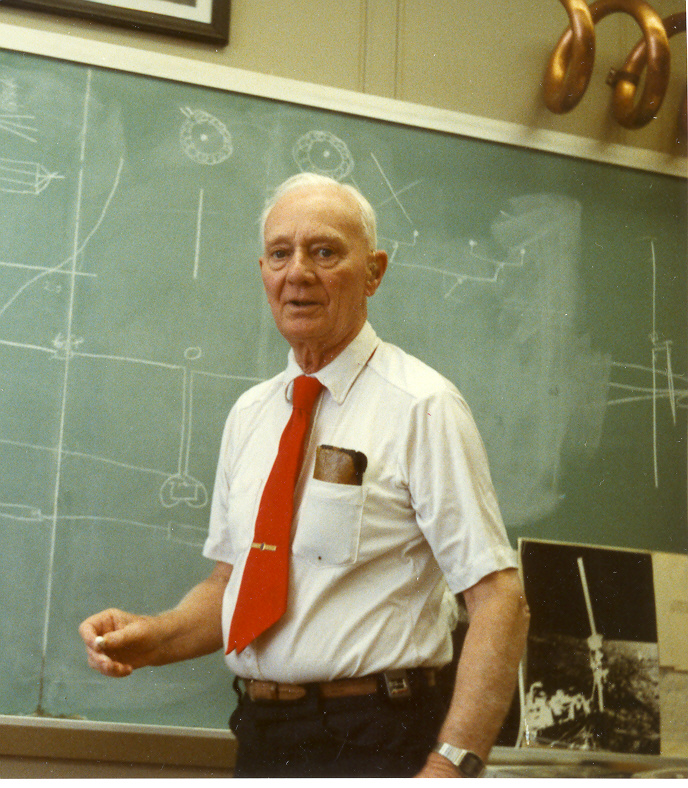 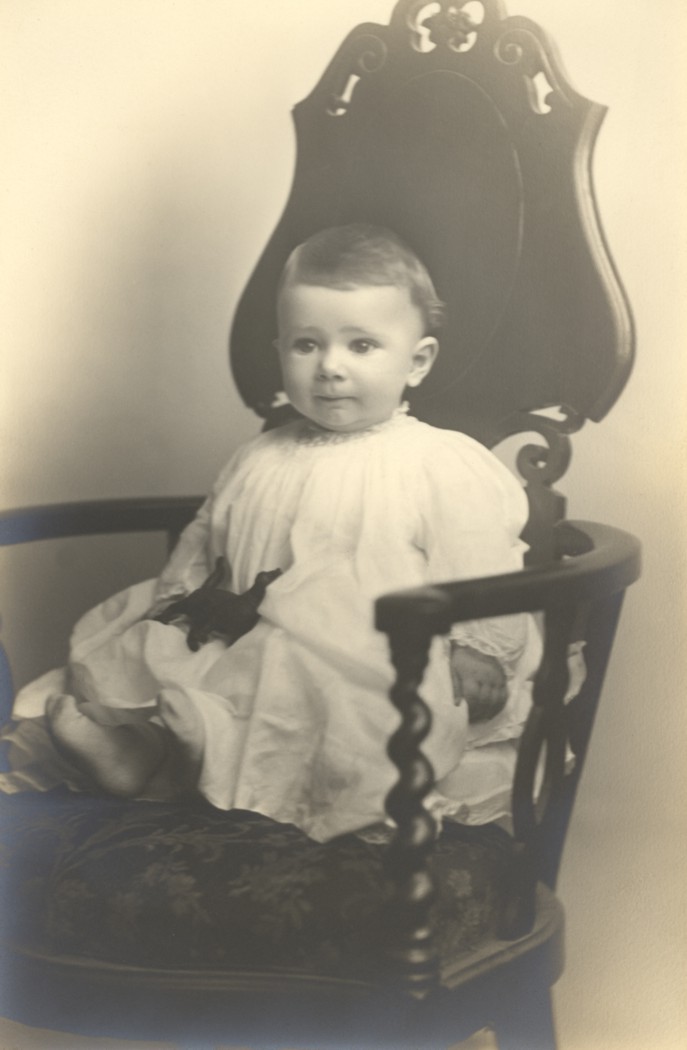 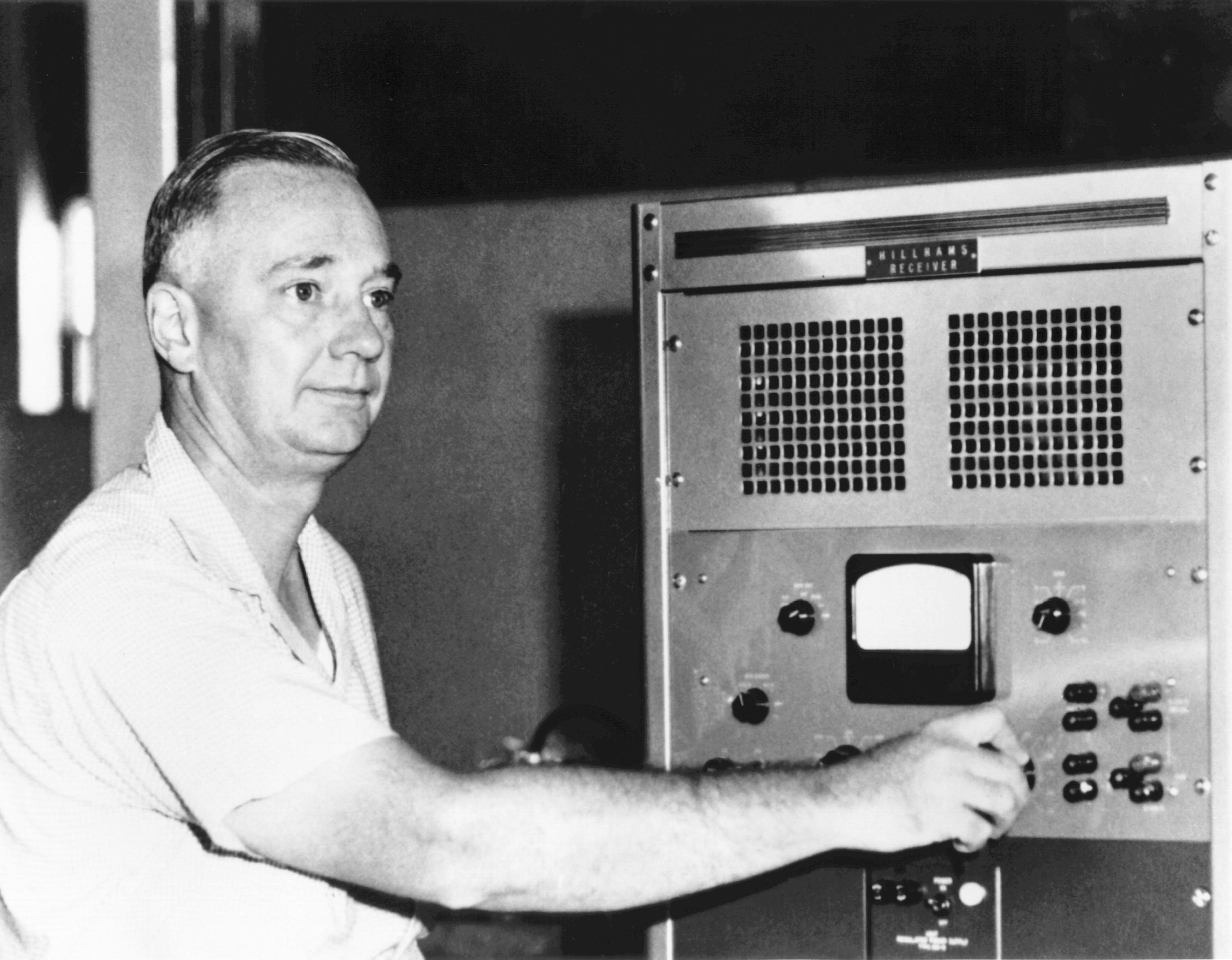 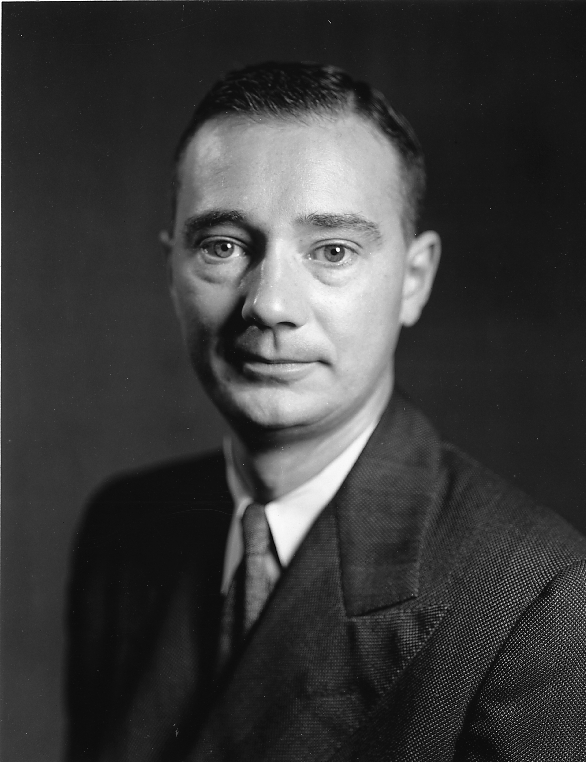 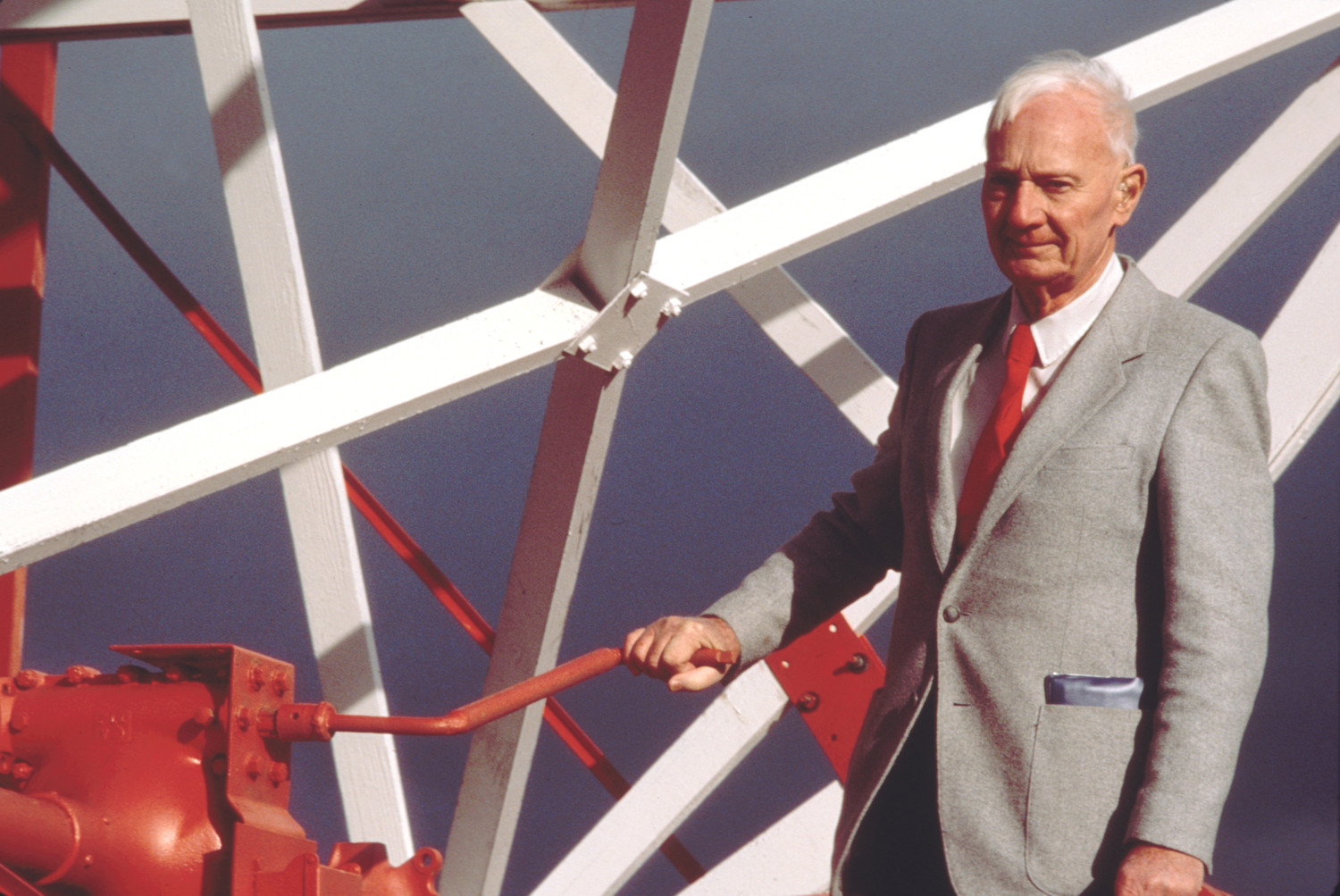 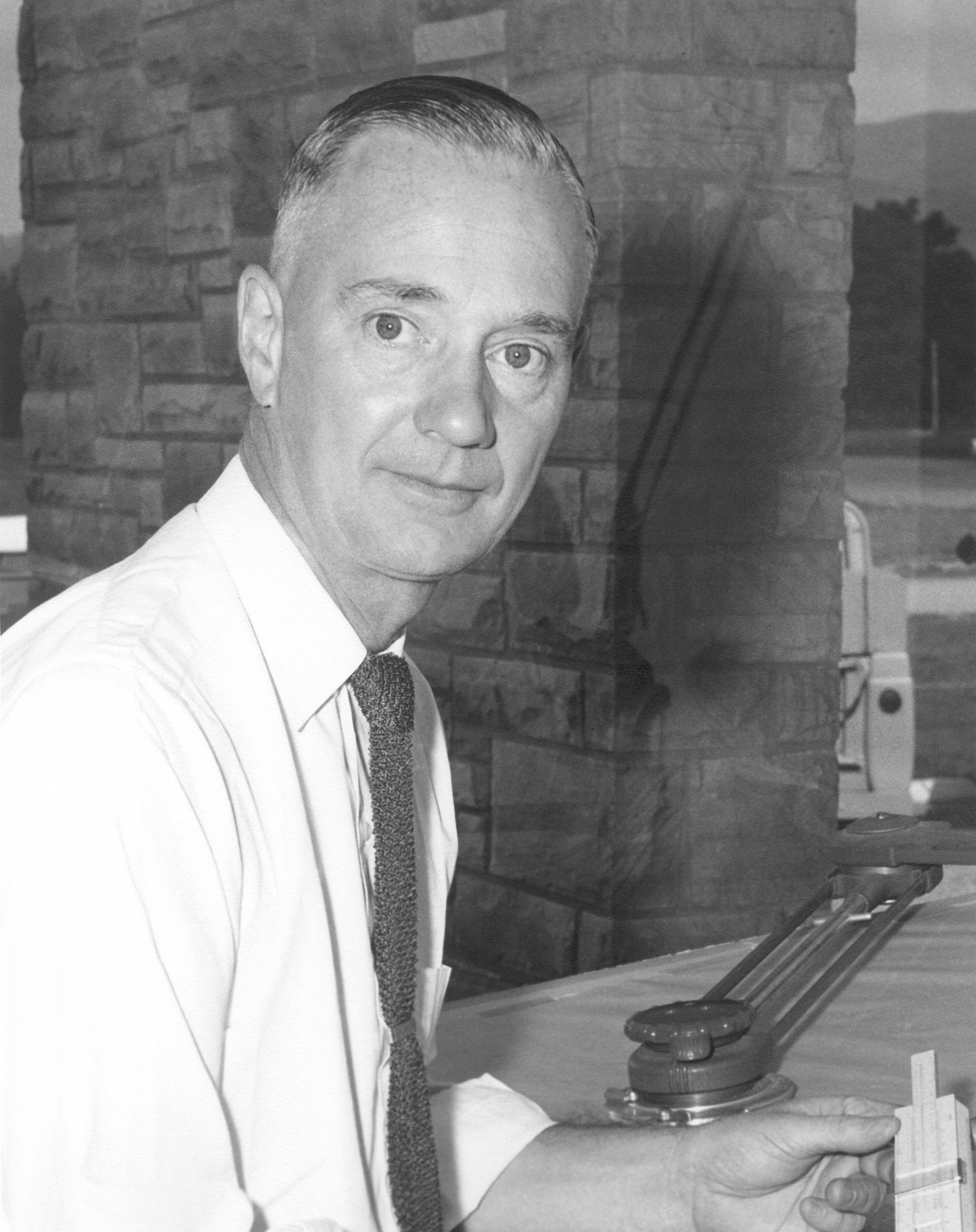 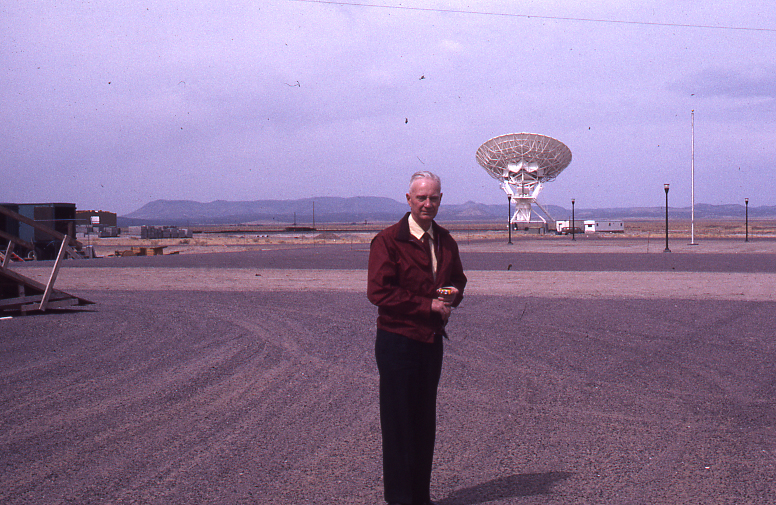 |
Related resources: See also Woodruff T. Sullivan's 1975 and 1978 interviews with Reber.
Location of collection: National Radio Astronomy Observatory, Archives, 520 Edgemont Rd., Charlottesville, VA. Phone: 1-434-296-0203, email: archivist at nrao.edu Title and dates of the collection: Papers of Grote Reber, 1848-2002 Size of the collection: 102 linear feet. Papers/Records created by: Reber, Grote (1911-2002) Short description of collection: These papers document the career, research, and personal life of Grote Reber, who designed and built the world’s first radio telescope in 1937, and established radio astronomy as a key sub-discipline of astronomy. His interest and research in radio astronomy and in other fields, including archeology, botany, electronics, and meteorology, continued nearly until the time of his death in 2002. The papers consist of correspondence, technical and research materials on radio astronomy and a wide variety of other topics, manuscripts and published papers, speeches, ham radio materials, newspaper and magazine clippings, photographs, and other miscellaneous materials.
Biography: Grote Reber was born in Chicago, Illinois on 22 December 1911, and grew up in Wheaton, a suburb of Chicago. His father, Schuyler Colefax Reber (1867-1933), was a lawyer and part owner of a canning factory, and his mother, Harriet Grote Reber (1871-1945) had been a teacher before her marriage. When he was 16, Reber received his amateur radio license, W9GFZ; the license was signed by then Secretary of the Interior, Herbert Hoover. He graduated from Armour Institute of Technology (now the Illinois Institute of Technology) in 1933 with a degree in electrical engineering, and between 1933 and 1947 held a series of jobs with Chicago companies, including General Household Utilities, Stewart-Warner Corporation, and the Research Foundation of the Armour Institute of Technology. Reber had read about Karl Jansky's 1933 detection of cosmic radio emission, and tried unsuccessfully to interest astronomers at University of Chicago's Yerkes Observatory and at other observatories and universities in further research in the area. Finally, he said, "I consulted with myself and decided to build a dish." He took the summer of 1937 off from his job with Stewart-Warner, and, using his own funds, designed and built a 32-ft parabolic transit dish in the vacant lot next to his mother's house, and then designed and built a series of sensitive radio receivers to place at the focal point of his dish. Since automobile ignition noise interfered with his observations, Reber worked only at night, and recorded by hand the minute-by-minute readings from his output meter. He continued at his job in Chicago during the day, and slept for a few hours each evening. He detected galactic radio noise in 1939, made the first maps of radio emission from the galaxy, and detected solar radio emission in 1943. The astronomical community was initially skeptical about his work, and the editor of The Astrophysical Journal was hesitant to publish the results. Reber claimed, "The astronomers of the time didn't know anything about radio or electronics, and the radio engineers didn't know anything about astronomy. They thought the whole affair was at best a mistake, and at worst a hoax." Finally, after several astronomers visited his Wheaton installation, they were convinced of the soundness of his work, and his initial papers on "Cosmic Static" were published almost simultaneously in The Astrophysical Journal and the Proceedings of the Institute of Radio Engineers. In 1947 Reber accepted a position with the National Bureau of Standards in Washington, D.C., where he was to set up a radio program at the Central Radio Propagation Laboratory. He sold the Wheaton dish and all his instrumentation to the government, and it was all moved to the NBS facility at Sterling, Virginia. Reber was soon frustrated by working as part of a government bureaucracy, by the lack of support for building a large radio telescope, and by the growing influence of McCarthyism. He was interested in the sea interferometry techniques being used by Australian radio astronomers, and, in 1951, abandoned his dish and the National Bureau of Standards, and went to Hawaii to work independently. From 1951 to 1954 he worked on Mt. Haleakala on Maui, Hawaii, building a rotating antenna. His observations were hampered by ionospheric refraction and terrestrial interference, so he got useful data for only a few strong radio sources. Because of his observing problems, he studied the ionosphere, and published important papers on the ionosphere and the atmosphere, as well as a paper on the age of lava flows. Reber was always eager to investigate new questions, and in July 1954 he wrote, "As you probably guessed, now that I am beginning to understand the phenomena available here at Kole Kole [Hawaii], I am beginning to lose interest in the situation and am anxious to get on with the next experiment." He moved from Hawaii to Tasmania in 1954, primarily because he expected the ionospheric transparency associated with the south magnetic pole would provide observing opportunities not available elsewhere. He concentrated on long wavelengths, and designed and built several arrays to study Galactic radio emission and absorption. Reber had a keen interest in political and social issues, and was particularly concerned with the management of U.S. scientific research, arguing against the funding of big science and large radio telescope projects. He questioned the "big-bang" universe, and argued vigorously against it until his death. Throughout his life he was interested in a wide variety of non-astronomy topics, and he did research and published papers in archaeology, meteorology, and botany. He was concerned about population growth and preservation of natural resources, and he designed and built his own energy-efficient house and his own electric car. He kept meticulous records on everything: how far he walked each day, postmark and receipt date for all received mail, how long light bulbs in his house lasted, which foot parrots held berries in while eating. He collected old broadcast radios, vacuum tubes, and early electronic equipment. With the exception of his time at National Bureau of Standards, Reber worked independently, and continued with his own research even during a few brief honorary appointments at the National Radio Astronomy Observatory, Ohio State University, and Australia’s Commonwealth Scientific and Industrial Research Organization. Between 1951 and 1980 he received financial support from the The Research Corporation, whose grant administrators’ remarkable flexibility allowed Reber to conduct research in his own non-traditional ways. His technical skills, his imagination and curiosity, his stubborn persistence and disregard for conventional methods and opinions, led him to investigate topics ignored by others. Reber built the world's first radio telescope, was the world's first radio astronomer, and for almost ten years was the only person in the world devoting significant research time to radio astronomy. Reber's pioneering work was ultimately recognized by the professional astronomy community. He received the Franklin Institute’s Cresson Prize, an honorary Doctor of Science from Ohio State University, the American Astronomical Society’s Russell Lecture Prize, the Bruce Medal of the Astronomical Society of the Pacific, the Associated Universities Inc. Jansky Lectureship, and the Jackson-Gwilt Medal of the Royal Astronomical Society. Although he made trips to the U.S., including one in 1959-1960 to reconstruct his Wheaton dish at the National Radio Astronomy Observatory in Green Bank, West Virginia, Reber continued to live in Tasmania after moving there in 1954. He applied for Australian citizenship, which was granted, but he never followed through with the final formalities, so remained a U.S. citizen. He died in Tasmania on 20 December 2002, two days before his 91st birthday. [Biographical note written by Ellen N. Bouton, with advice and assistance from Kenneth I. Kellermann. For a more detailed biography of Reber, see K.I. Kellermann: "Grote Reber (1911-2002)" Publications of the Astronomical Society of the Pacific, 116, 703-711, 2004.] Accession history: In 1982, at the request of the National Radio Astronomy Observatory (NRAO) Director Morton S. Roberts, Margaret B. Weems, NRAO Technical Publications, wrote to Grote Reber inquiring about Reber’s interest in depositing his research equipment and documentation with NRAO in Green Bank, WV. There was apparently no further correspondence at that time. In 1989, Kenneth I. Kellerman, NRAO Senior Scientist, visited Reber in Tasmania, Australia, and suggested to Reber that his materials should be preserved. Reber wrote to Kellermann on 23 August 1993, offering to donate his materials to NRAO; following discussions with NRAO Director Paul Vanden Bout, Kellermann wrote back to Reber on 9 September 1993 accepting the donation. After lengthy negotiations between Reber, Kellermann, and the shipping agents, 98 packing crates of books, journals, papers, correspondence, artifacts, and equipment were shipped from Tasmania in July 1994, and arrived at the NRAO site in Green Bank WV in autumn of 1994. Over the next several months, an initial rough inventory and sort of the material was done by Kellermann and several members of the NRAO staff, primarily Hein Hvatum, Fred Crews, George Grove, and Carl Chestnut. On 24 May 1995, Reber arrived in Green Bank, and spent the next several weeks helping with the sorting of materials and equipment, and sharing stories and information about them. On 6 June 1999 Reber wrote to the Director, Radio Observatory, Green Bank, WV, suggesting he send his remaining artifacts to Green Bank, and requesting payment of shipping costs, his travel, the wages of assistant, contingency funds ($2K), and the refurbishment of the small Reber Building adjacent to the reconstructed Reber telescope in Green Bank. Unfortunately, this letter was addressed to Green Bank and was ignored by the local Green Bank staff. On 28 September 1999 Reber wrote again, this time to NRAO Director Paul Vanden Bout in Charlottesville VA, inquiring about his previous letter. On 11 November 1999, Kellermann responded to Reber, agreeing in principle but suggesting a delay in shipment until the new Science Center, planned for construction in Green Bank, was completed, since that was where the artifacts would be housed. There was no further correspondence on this topic, no material was shipped, and Reber died in December 2002. On April 3 and 4, 2003, Dave Jauncey, Tasso Tzioumis, and Dave McConnell, all from the Australia Telescope National Facility, Esko Valtaoa, visiting radio astronomer from Finland, Martin George, from the Queen Victoria Museum, and Dale Blanchard, executor of Reber's estate inventoried all of the materials in Reber's house. In September 2003, Kellermann and Australian radio astronomer David Jauncey met with Dale Blanchard, executor of Reber's estate, to discuss plans for commemorating Reber's life and work. Kellermann and Jauncey then visited the Queen Victoria Museum, Launceston, Tasmania, to inspect the remaining materials, now stored at QVM. Although Reber's correspondence with NRAO in 1999 indicated he had only equipment and artifacts to ship, materials at QVM included a quantity of papers, manuscripts, and correspondence equal to or greater than what had been shipped to NRAO in 1994. It is expected that equipment and artifacts which relate primarily to Reber's activities in Tasmania will remain in Australia where they will be on display at the QVM and at Parkes. In April 2004, Kellermann, Jauncey, and Martin George, astronomer, historian, planetarium director and QVM Acting Director, spent four days sorting the materials at QVM and creating a very preliminary inventory. Also in April 2004, Reber's papers, publications, and correspondence received at NRAO in 1994 were transferred to to NRAO’s new Archives in Charlottesville VA, and processing of the collection was begun. Processing of materials transferred to the NRAO Archives in 2004 was completed in December 2006 by Evelyn Braintwain and Ellen Bouton. Artifacts and equipment received in 1994 will remain in Green Bank WV, and many items are on display or will be used in future displays at the Green Bank Science Center. Additional papers were shipped from Tasmania in 2008 and 2009. In the interest of efficient processing, processing was delayed in expectation of receipt of the remaining papers, but when it seemed likely that remaining materials would stay permanently in Tasmania, some material was processed by Sierra Smith in 2013, and additional processing was done in 2016 by Candice Waller and Ellen Bouton. Access to collection: No restrictions. The Archives are open part-time; contact the Archivist for appointment. Restrictions on use of collection: No restrictions on Reber’s papers. Related materials, including photographs taken by David Jauncey and Martin George, and photocopies from other sources gathered by Kenneth I. Kellermann during his research on Reber, are available for study but may not be copied, as ownership and copyright rests with other persons or institutions. Publication rights: Copyright for personal and research papers has been assigned to the NRAO/AUI Archives; all requests for permission to publish or quote from manuscripts must be submitted in writing to the Archivist. Preferred citation: National Radio Astronomy Observatory/Associated Universities, Inc. Archives, Papers of Grote Reber, <series/unit/subunit/box #>. After the initial citation, abbreviations may be used: NRAO/AUI Archives, Reber Papers, <series/unit/subunit/box #>. Processing notes: This collection was processed by Ellen N. Bouton and Evelyn Braintwain, with assistance from Kenneth I. Kellermann. Selected correspondence, papers, and data extracted from material received in Green Bank in 1994 was arranged chronologically by Kellermann in 2003; some staples and paper clips were removed. Arrangement, description, indexing, foldering and boxing of this material was begun in April 2004 by Bouton; final processing of materials held at NRAO, including digitization of photographs, was done by Braintwain between August 2005 and December 2006. Remaining paper clips and staples were removed during processing. Preservation photocopies were made of newspaper clippings, and the original clippings were discarded. Digitization of most documents in the collection received in 1994 was done in 2007-2008. Additional papers were shipped from Tasmania in 2008 and 2009. In the interest of efficient processing, processing was delayed in expectation of receipt of the remaining papers, but when it seemed likely that remaining materials would stay in Tasmania, some material was processed by Sierra Smith in 2013, and additional processing was done in 2016 by Candice Waller and Ellen Bouton. Correspondence Series: With the exceptions noted below, this series currently includes the bulk of Reber’s correspondence from 1924-2002. For his handwritten notes, diagrams, calculations, and data, Reber frequently used the backs of letters written to him, sometimes apparently unsolicited mail but also letters from equipment manufacturers regarding items he had either ordered or inquired about. He occasionally used the backs of carbon copies of his own letters as well. Thus, researchers using the correspondence may also wish to examine Reber’s papers from the appropriate time period to see if there is any relevant correspondence on the verso of the papers. Additionally, Reber occasionally used the backs of similar letters to him for his own carbon copies. Letters are often annotated with notes about postmark and receipt dates, with receipt dates of items requested, or with notes about enclosures. Staples or clips attaching handwritten notes and other materials to letters have been removed and the material filed with the letters. When they have been retained, any photographs, drawings, reprints, or other materials sent to Reber have been filed with the relevant letters. Correspondence related to some significant groupings of material has been kept with that material in either the Notes and Papers series or the Publications series. For example, the several letters relating to the 1947 move of Reber’s equipment from Wheaton IL to Sterling VA have been filed in the Antenna series with the notes, paper, contracts, etc related to that move. Correspondence, either between Reber and the editors or between Reber and his co-authors, related to the drafts, editing, and publishing process of Reber’s publications, has been filed with the particular publication in the Publications series. However, correspondence related to Reber’s various rejected submissions has been retained with the General Correspondence series. All other correspondence has been divided into four units:
Notes and Papers Series: This series contains Reber’s own notes, drawings, photographs, diagrams, observational data, and calculations, as well as meeting programs, customs documents, membership cards, instruction booklets and handbooks, world maps and localized topographic maps, and other miscellaneous retained materials, including railroading, meteor craters, and Hobart Walking Club materials and records. Design and construction notes, drawings, and related correspondence for the Wheaton antenna, as well as its reconstruction in Sterling, Virginia, and Green Bank West Virginia, are included in Antennas series. Reber’s own publications, along with drafts thereof, are part of the Publications series. However, materials related to his presentations at meetings for which there were no published proceedings, including the December 1953 AAAS Section D Symposium on Radio Astronomy and the January 1954 Radio Astronomy Conference held at Carnegie Institution in Washington DC, are filed in this series, as are unpublished manuscripts and their related correspondence. Correspondence related to some significant groupings of material has been kept with the material. This series includes all materials and correspondence related to Reber’s receipt of the Franklin Institute’s Elliott Cresson Medal in 1963; the medal is on public display at the Du Page County Illinois Historical Museum. This series currently covers the period 1920-1966. Size: 3.5 linear feet. Click here for digitized documents and a list of non-digitized material. Personal Finances Series: This series includes Reber’s personal financial information from 1937 through 1968. Included are correspondence; receipts; notes; brochures; subscription renewals; lists and receipts of purchases; bank statements; checkbook stubs; tax forms; W2s; and records of stock dividends. Folder titles used are the titles from Reber’s manila envelopes. Reber’s grants and financial arrangements with The Research Corporation are discussed in The Research Corporation Correspondence Series; financial records related to Reber's antennas are included in the Antennas Series. Size: 1.5 linear feet. Click here for a list of non-digitized material. Photographs Series: This series contains photos, negatives, and slides from approximately 1910 through the late 1980s. The material has been sorted and a listing compiled and filed with each group; a master listing for all photographs is filed at the beginning of the series. When they existed, Reber’s original, handwritten lists of photographs, negatives, or slides have been retained. The series includes photos, negatives, and/or slides of Reber's scientific work (antennas, arrays, ham radio, electric cars); personal interests (locomotives, cloud formations, plants, flowers, houses, kitchen middens); family; travel and research destinations (Alaska, Arizona, Hawaii, New Zealand, Tasmania) and more. Contact the archivist for information about access to undigitized photos. Size: 3.5 linear feet. Selected photographs have been digitized and organized into the following thematic units and subunits:
Reber Publications Series: This series includes Reber’s publications in books, journals, and published conference proceedings. It includes drafts, final versions, proofs, cuts from journals, and reprints. If neither journal cuts nor reprints are available, we have retained a photocopy of the article, Correspondence, either between Reber and the editors or between Reber and his co-authors, related to the drafts, editing, and publishing process has been filed with the relevant publication. However, correspondence related to Reber’s various rejected submissions has been retained with the General Correspondence series. Materials related to his presentations at meetings for which there were no published proceedings, including the December 1953 AAAS Section D Symposium on Radio Astronomy and the January 1954 Radio Astronomy Conference held at Carnegie Institution in Washington DC, are filed in the Notes and Papers series. Unpublished papers are also filed in the Notes and Papers series. This series includes 86 publications and covers the period 1935-1995. Size: 6.0 linear feet. Click here for a list of non-digitized material. For a bibliographic listing of Reber's publications, click here. Collected Publications Series: This series includes publicatons received by Reber from individuals, institutions, and corporations, as well as items collected by him. Material includes journal cuts, photostats, reprints, preprints, and reports. Although some materials were requested by Reber, there are many for which it is unclear whether they were received unsolicited or were received in response to his requests. Others, such as the newspaper clippings and journal cuts, were clearly collected by Reber. Reber collected and grouped these materials in large manilla envelopes; the envelopes have been discarded, but his original groupings have been retained, and his handwritten labeling on the envelopes have been used as the folder titles. Letters requesting reprints and Reber's handwritten notes have been retained with the appropriate group. Preservation photocopies have been made of the newspaper clippings. This series has been divided into three units. Reprints of Reber's own publications are included in the Reber Publications Series.
Newspaper and Magazine Clippings Series: This series contains newspaper and magazine clippings, as well as journal cuts, from 1932 through 1988, that were collected by Reber. This series has been divided into 4 units. Size : 0.5 linear feet.
Antennas Series: Units in this series include materials on antennas and antenna arrays built by Reber, as well as materials related to Reber’s studies of antennas and arrays. For material on the various areas of research for which Reber used the antennas, see the Radio Astronomy Series.
Antique Radios Series: This series includes materials related to Reber's interest in antique radios and radio parts. The series is divided into two units:
Archaeology and Anthropology Series: This series includes correspondence from 23 March 1960 through 18 April 1967. Primary correspondents are Grote Reber, Milton Trautman of Isotopes, Inc., T. A. Rafter and H.S. Jansen of the Institute of Nuclear Science in New Zealand, Harold W. Krueger of Geochron Laboratories, Rhys Jones, Alice Bermingham of the Institute of Applied Science of Victoria, and Kunihiko Kigoshi of Gakushuin University. The correspondence covers Reber's archaeological work in Tasmania: the carbon dating of charcoal fragments taken from South Arm,Hobart; West Point; Grandfather's Beach, Cape Sorell, Macquire Harbour; Arthur River; Woolnorth Point. It also includes notes on kitchen middens, as well as three aerial photos. Size: 0.5 linear feet. Click here for digitized documents. Atmospheric Pressure Oscillations Series: This series includes material on Reber's research on atmospheric pressure oscillations over the period 1953-1966, and has been divided into two units:
Botany Series: This series includes materials on Reber's discussions of and experiments with Hawaiian beans, scarlet runner beans, boweiea volubles, flinders island vine, smilax, magdalen, dioscorea villosa, brodiaea volubilis, dioscorea cotonfolia, dioscorea sylvatica, asparagus asprogoides, vigna beans, pineapple, marrawah vines, as well as scarlet gum, divaricuta, and willow trees. Dried vines retained by Reber have been discarded. The series is divided into two units:
Cosmic Rays Series: This series covers Reber’s study of cosmic rays from 1957 through 1966, and includes maps, reprints, data, notes, and other materials. Reber’s original arrangement of materials has been retained. Size: 0.5 linear feet. Click here for a list of non-digitized material. Data Log Books Series: This series includes Reber’s data log books from 1938 through 1949. Folder titles used are the spine titles from Reber’s original three-ring binders. The material covers his research on antenna theory and calculations; dipoles; 480 mc; tube amplifiers; lighthouse tubes; hemisphere antenna data and parts; 160 mc; and sunspot observations. Included are charts, graphs, notes, and some related correspondence. Size: 3.0 linear feet. Click here for a list of non-digitized material. Ham Radio Series: This series includes correspondence, papers, notes, newspaper clippings, log files, received QSL cards, and other miscellaneous items related to Reber's involvement with ham radio from 1928-1938. Also included is 1996-1997 correspondence with Kenneth I. Kellermann about the transfer of Reber's W9GFZ call sign to the NRAO Amateur Radio Club. See also the photo of Reber and the Fox River Radio League in the Additional Materials About Reber, Photographs. Size: 0.5 linear feet, plus 3 boxes, 12" x 7.75" x 5.5", containing received QSL cards. Click here for a list of non-digitized material. Hawaiian Lava Flows and Geology Series: This series includes correspondence, papers, and notes from 3 February 1950 through 7 March 1962. Primary correspondents are Grote Reber; Alexander Spoehr and Kenneth P. Emory of the Bishop Museum; H. R. Crane of the University of Michagan; W. F. Libby of the University of Chicago; Henry L. Kraybill of Yale University; J. Lawrence Kulp of Columbia University; David T. Fleming; Daok C. Cox of the Hawaiian Sugar Planters Association; Harold S. Palmer; and Howard A. Powers and Robert W. Carpenter of the U.S. Department of the Interior. The material covers Reber's work on several sites in Hawaii: the carbon dating of lava flows, tree moulds, and cinder cones. It also includes maps, as well as notes and information about earthquakes. Size : 0.5 linear feet. Click here for digitized documents. Related materials: See the Maui folder in the Brochures, Maps, and Mementos Series for detailed maps and other general information on Haleakala. Ionosphere Series: This series contains information from 1941 through 1957 about Reber’s ionosphere research. Included in the series are charts, graphs, notes, data, National Bureau of Standards publications, and some correspondence. Reber received his data from Asia, Australia, Africa, Europe, Hawaii, Oceania, and North, South, and Central America. The series has been divided into units.
Lectures Series: This series includes Reber's lecture notes, as well as correspondence, announcements, newspaper clippings, and invitations from 1946 through 1988. Organizations include The American Astronomical Society; the Institute of Radio Engineers; URSI and IRE joint meetings; The Physics Club; The National Bureau of Standards; Sigma Pi Sigma; American Physical Society; CSIRO; the Astronomical Society of Tasmania; the Royal Society of Tasmania; Hobart Biological Society; The National Air and Space Museum; The University of Washington; New Mexico Tech; and The Australian and New Zealand Association for the Advancement of Science. The text of Reber's Henry Norris Russell lecture on 28 August 1962 is included. The lecture subjects include electronics; cosmic static; solar and cosmic radio waves; galactic and solar waves; radio astronomy history; beans and bean vines; and Tasmanian aborigines. An additional folder added in 2013 contains miscellaneous notes, correspondence, and abstracts from various lectures; material in this folder is dated 1959-1971 and was apparently a working folder from Reber's desk. Size: 0.5 linear feet. Click here for digitized documents and a list of non-digitized material. Meteorology Series: This series contains information about Reber's Hawaiian meteorological research, 1941 through 1958, prior to and while living in Hawaii. Locations he studied are Honolulu, Mauna Koa, Mauna Kea, Kole Kole, and Haleakala. Included in the series are charts, graphs, notes, data, newspaper clippings, reprints, journal cuts, correspondence, maps, and photographs. Reber studied altitude, rainfall, clouds, thunderstorms, windspeed, and volcanoes, used Geological Survey Climatological Data and Summaries, and retained his original data on thermograph charts, microbarograph charts, and hygrothermograph charts. Reber’s original arrangement of the collection has been retained. Box and folder titles used are the titles Reber used, and individual folder contents lists have been created and filed at the front of each folder. Size: 6 linear feet plus one drop-front box, 21" x 17" x 3". Patents Series: This series includes correspondence, notes, papers, drawings, diagrams, patent applications, forms, invoices, and bills from 1944 through 1952 related to Reber’s design of a radio sextant/navigational instrument. Reber’s collection of reprints of patents dated 1929 through 1950 are included, as well as the original United States Patent 2,519,603 for Reber’s Navigational Instrument patented August 22, 1950. Correspondents are Reber and Jules L. Brady, the lawyer who assisted Reber with his patent application. Reber’s original arrangement of materials has been retained. Folder titles used are the titles from Reber’s manila folders. Size: 0.5 linear feet. Radio Astronomy Series: This series includes materials related to Reber's research in radio astronomy. For material on design and construction of various antennas and antenna arrays built by Reber, see the Antennas Series.
Topical Files Series: This series includes Reber materials received as part of the 2008-2009 shipment from Tasmania (see Accession History above) that do not fit well in other series in this collection. The material has been aranged by topic and Reber's original folder titles have been retained. Materials include correspondence, reprints, newspaper clippings, notes, data, brochures, calculations and drawings, and reports. Material in this series is dated 1951-1995. Size: 3.75 linear feet.
Brochures, Maps, Mementos, and Objects Series: This series includes maps, brochures, and other promotional tourist and travel information, trip mementos, and objects collected by Reber.
Books: Books shipped by Reber in his 1995 shipment of materials, with publication dates ranging from 1886-1991. They are primarily engineering, electrical, electronics, mathematics, and physics texts, but also include general science and other miscellaneous titles. Size: 9.0 linear feet. Oral History Interviews: Two interviews with Grote Reber at the Wheaton History Center, 660 North Main St., Wheaton IL 60189, USA. Interview no. 1 conducted on 19 October 1985 by Alberta Adamson, Wheaton History Center; transcribed at National Radio Astronomy Observatory by Sheila Marks with assistance from K.I. Kellermann and help from Jeff Reber (nephew of Grote) on spelling of some proper nouns (NRAO Archives has a copy of the original tape, a digitized copy on DVD, and a 13 page typed transcript). Interview no. 2 conducted on 17 June 1995 (NRAO Archives has a copy of the original tape and a digitized copy on DVD). Interviews cover Reber's family history, his childhood and youth in Wheaton, and some of his early work in radio astronomy; the 1995 interview includes discussion about materials, including photographs that Reber was donating to the Center. Owning repository for both interviews: Wheaton History Center; material may not be copied, and permission to quote must be obtained from Wheaton History Center. Interviews are filed with box 1 of Additional materials about Reber. See also the Papers of Woodruff T. Sullivan III for Sullivan's extensive interviews with Reber, 195 minutes in 1975 and 90 minutes in 1978. Additional Materials about Reber: These materials are about Reber but were not created or collected by him. Click here for digitized documents and a list of non-digitized material. Included are:
Materials in Tasmania include papers and correspondence, as well as radio and electronic equipment, Reber's electric car, books, journals, and personal effects. The materials are not currently accessible, and no specifics on size of the collection are available. The NRAO Archives has a copy of the Significance Assessment of the Grote Reber Museum Collection, August 2012, prepared by Annette Welkamp, which describes the archival materials and objects held by the Museum. |
